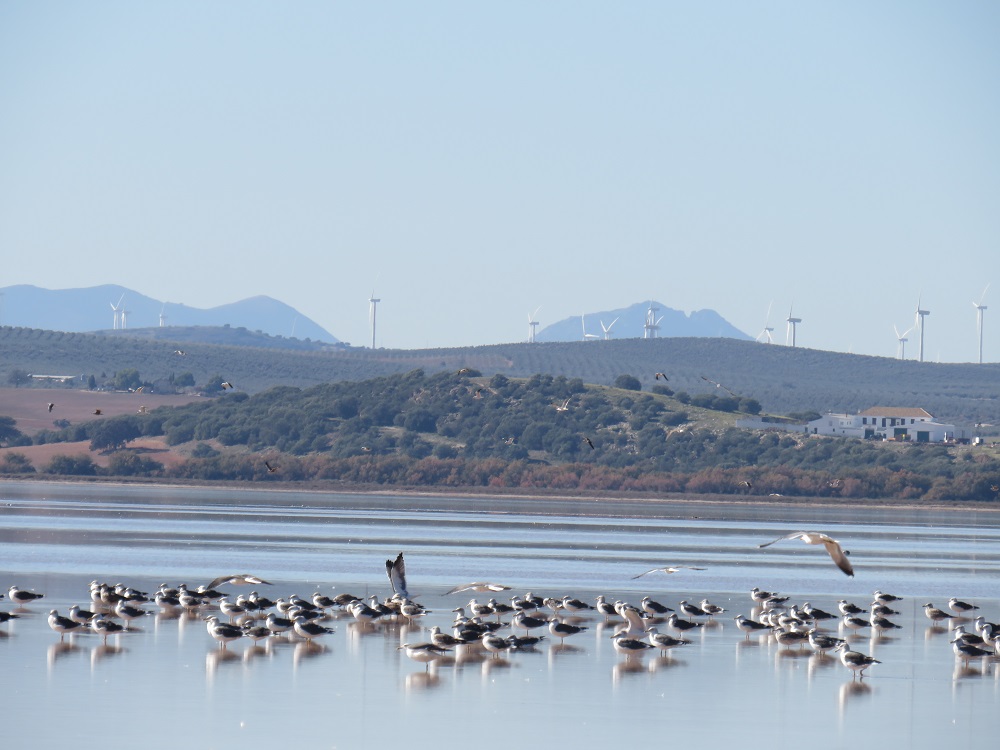Scientists from Doñana Biological Station – EBD-CSIC have studied the role of waterbirds in the dispersion of invertebrates between habitats. The study has taken place in seven sites in Andalucia with different degrees of anthropogenization: Doñana ricefields, Celtina and Punta Entina saltpans in Almeria, Fuente de Piedra lake in Malaga, and three landfills sites in Huelva, Sevilla, and Córdoba.
This new study shows the capacity of waterbirds to disperse freshwater invertebrates, including some exotic species, by a process known as endozoochory (via animal guts). The high mobility of gulls and storks makes this fact quite important since they could help the dispersal of these invertebrates between different habitats and introduce them into nature reserves.
"Since the pioneering studies of Darwin, it has become widely accepted that waterbirds can transport invertebrates, including organisms such as freshwater snails or zooplankton. However, these studies focused on native species. Today we know that birds can also transport invasive species", explains the researcher Victor Martín Vélez, co-author of the study. In this case, the scientific team has studied the invertebrates dispersed by endozoochory through the lesser black-blacked gull (Larus fuscus), wintering in Andalusia and breeding in Northern Europe.
The study has taken place in seven sites in Andalusia, with different degrees of anthropogenization: Doñana ricefields, Celtina and Punta Entina saltpans in Almeria, Fuente de Piedra lake in Malaga and three landfills sites in Huelva, Sevilla, and Córdoba, frequently visited by gulls. The dispersal capacity of gulls was also compared in ricefields to that of white storks, an opportunistic species which feeds in the same way and is bigger.
After the study of faeces and pellets, scientists found especially snails and other smaller invertebrates such as bryozoans, cladocerans and other brachiopods (small crustaceans). Greater diversity and abundance of invertebrates were recorded in particular in Doñana ricefields, where a notable presence of the alien snail Physella acuta was found. "One snail was still alive three weeks after being collected in the field. This suggests that many other snails could have been also alive when the samples were taken. They also confirm the viability for the cladoceran Machrothrix rosea in ricefields and the alien brine shrimp Artemia franciscana was recorded mainly in Cetina saltpan in Cádiz. This American species is threatening the native Artemia species in Andalusian saltpans.
In short, this study confirms that, through their high mobility, gulls and storks can disperse invertebrates between different natural and artificial habitats. "We show the capacity of gulls to transport alien species from ricefields to Fuente de Piedra lake in Malaga, which can threaten the native species in natural wetlands", explains the researcher Andy Green. The team has found that gulls, in addition to introducing alien species into other sites, are capable of transporting native species of invertebrates to new environments created by humans, such as landfills.
In the case of alien and invasive species such as Physella acuta and Artemia franciscana, these waterbirds can be a dispersal and expansion vector for their distribution. "In a context of global change, the exploitation of artificial environments as food sources and the use of natural aquatic environments as roosting sites by these birds can lead to increased pressure for these sites, not only because of the arrival of invasive species but also other contaminants, result of human activity", concludes the researcher Marta Sánchez.
This research opens new questions about the capacity of waterbirds to disperse invertebrates. For example, it is necessary to further investigate their role in the dispersion of molluscs and to develop genetic studies to better understand if the eggs of invertebrates that are dispersed by birds will survive in their destination or how far they participate in the genetic exchange of invertebrate populations from different wetlands.
Referencia
Martín?Vélez, V., Sánchez, M. I., Lovas?Kiss, Á., Hortas, F., & Green, A. J. (2021). Dispersal of aquatic invertebrates by lesser black-backed gulls and white storks within and between inland habitats. Aquatic Sciences. https://doi.org/10.1007/s00027-021-00842-3
https://link.springer.com/article/10.1007%2Fs00027-021-00842-3#Abs1








 ¡Abierta convocatoria para proyectos de investigación en la ICTS- Doñana!
¡Abierta convocatoria para proyectos de investigación en la ICTS- Doñana!


